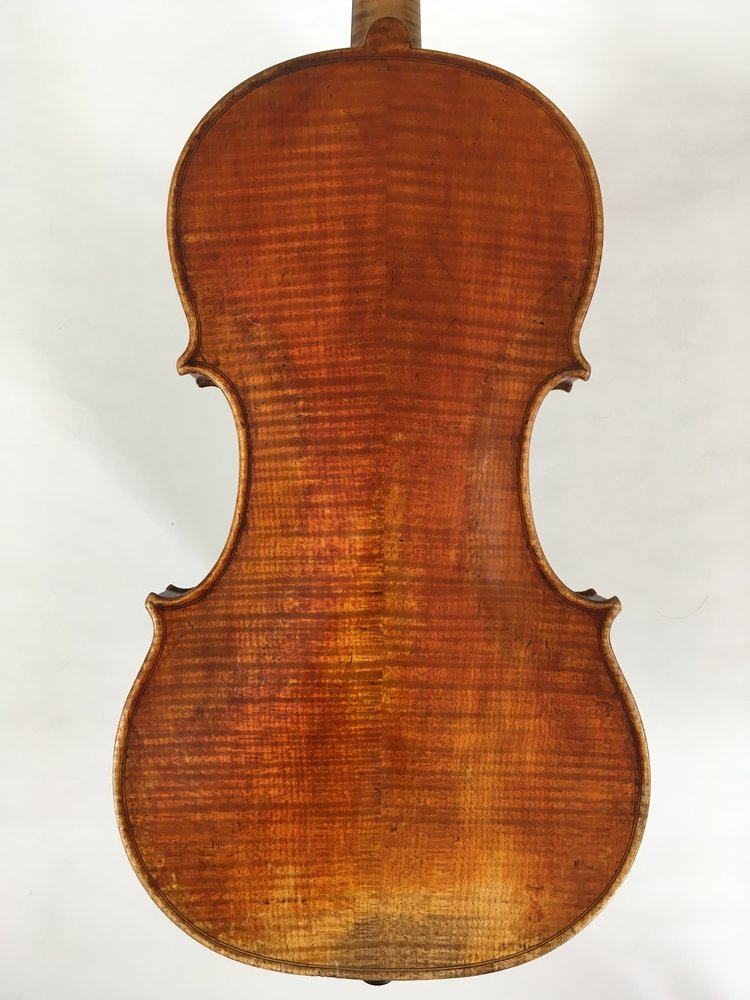A Question of Origin
How does one determine the nationality of an instrument? Should it be the origin of the maker, the style/construction method, or where the instrument was actually made? Of course the question is all too often ‘can we call this Italian?’.
In the case of this 1849 Charles Boullangier violin, however, the answer is somewhat complex. Boullangier was born in Mirecourt in 1823 and moved to Paris to work with the great J.B. Vuillaume, followed by Gand and Bernadel in 1846. After the tumultuous upheaval of the 1848 French Revolution, Boullangier fled to the relative stability of London. It is well documented that he then worked for Edward Withers, but this violin isn’t labelled Withers or Boullangier. It bears an original label of George Louis Panormo, a fourth-generation instrument maker of the Panormo dynasty who specialised in making guitars, and although there is no published link between Charles Boullangier and George Louis Panormo, the latter clearly retailed the violin.
Here is the label:

This brings us back to the first question about nationality. Was the violin made in Paris, pre-move, and merely labelled by Panormo, or was it made in London following a commission by Panormo? Is it French or English? Of course we will never know but I think English is the most sensible in this case, given that it was sold in London.
Either way, what is important with this violin is the supremely high quality of workmanship and full blooded tone – a cut above a lot of what was going on in London at the time and comparable in quality to the best violins from the J.B. Vuillaume workshop, where Boullangier trained.
My sincere thanks to Andrew Fairfax, curator of the recent Vincenzo Panormo exhibition, for his archival research into this violin and input into this blog.

.jpg)

.jpg)
